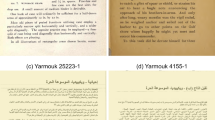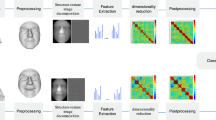Abstract
After millions of years of evolution, nature has developed a wide variety of interesting structures, each with their own singularities and properties. Such structures provide several unique and innovative models which may be extended to solve complex engineering problems. One example of such structures is the so-called orb webs, built by many species of a spider as a part of their survival tactics. Orb webs are highly optimized structure, specifically devised to capture prey by efficiently covering a whole area with sticky threads. In this paper, a new feature descriptor called spider local image features (SLIF) is proposed. In the proposed approach, feature vectors are built by selectively extracting pictorial information from a set of previously detected interest point. This is achieved by considering a set of efficiently distributed sampling points, which emulate the intersection nodes formed by the threads of an orb web structure. The SLIF method produces simple low-dimensional feature descriptors, which are robust to several image transformation and distortions, such as scaling, rotation, bright shifts and viewpoint changes. In order to illustrate the proficiency and robustness of the proposed approach, it is compared to other well-known feature description methods, such as those presented on the scale-invariant feature transform, speeded-up robust features, binary robust scalable keypoints and fast retina keypoints. The comparison examines several different images, commonly considered as a benchmark within the image matching literature. Our experimental results evidence SLIF’s high performance and robustness against common image transformations and distortions and further show its viability for many of computer vision applications.
















Similar content being viewed by others
References
Alahi A, Ortiz R, Vandergheynst P (2012) FREAK: fast retina keypoints. In: IEEE conference on computer vision and pattern recognition
Aoyanagi Y, Okumura K (2010) Simple model for the mechanics of spider webs. Phys Rev Lett 104:1–4
Bay H (2006) From wide-baseline point and line correspondences to 3D. PhD thesis, ETH Zurich
Bay H, Ess A, Tuytelaars T, Van Gool L (2008) Speeded-up robust features (SURF). Comput Vis Image Underst 110(3):346–359
Calonder M, Lepetit V, Strecha C, Fua P (2008) BRIEF: binary robust independent elementary features. In: Computer vision—ECCV 2010, 6134. Springer, pp 778–792
Chen P, Lin A, Lin Y, Seki Y, Stokes A, Peyras J, Olevsky E, Meyers M, McKittrick J (2008) Structure and mechanical properties of selected biological materials. J Mech Behav Biomed Mater 1:208–226
Eberhard W, Agnarsson I, Levi H (2008) Web forms and phylogeny of theridiid spiders (Araneae: Theridiidae). Syst Biodivers 6(4):415–475
Foelix R (2011) Biology of spiders, 3rd edn. Oxford University Press, Oxford
González R, Robson W, Pedrini H (2014) Linear dimensionality reduction applied to scale invariant feature transformation and speeded up robust feature descriptors. J Electron Imaging 23(3):1–13
Hu Z, Fan Y, Zeng X (2014) A low dimensional intensity-based feature descriptor for fast image matching. In: IEEE international conference on solid state and integrated circuit technology (ICSICT), pp 1–4
Leutenegger S, Chli M, Siegwart R (2011) BRISK: binary invariant scalable keypoints. In: IEEE international conference on computer vision (ICCV), pp 2548–2555
Lowe D (2004) Distinctive image features from scale-invariant keypoints. Int J Comput Vision 60(2):91–100
Meltzer J, Soatto S (2008) Edge descriptors for robust wide-baseline correspondence. In: IEEE conference on computer vision and pattern recognition, pp 1–8
Mikolajczyk K, Schmid C (2005) A performance evaluation of local descriptors. IEEE Trans Pattern Anal Mach Intell 27(10):1615–1630
Ojala T, Pietikainen M, Maenpaa T (2012) Multiresolution gray-scale and rotation invariant texture classification with local binary patterns. IEEE Trans Pattern Anal Mach Intell 24(7):971–987
Penatti O, Silva R (2008) Color descriptors for web image retrieval: a comparative study. In: XXI Brazilian symposium on computer graphics and image processing, pp 163–170
Qian J, Yang J, Xu Y (2013) Local structure-based image decomposition for feature extraction with applications to face recognition. IEEE Trans Image Process 22(9):3591–3603
Qu L, Long F, Peng H (2015) 3-D registration of biological images and models: registration of microscopic images and its uses in segmentation and annotation. IEEE Signal Process Mag 32(1):70–77
Quinn S, Gaghran W (2010) Bionics—an inspiration for intelligent manufacturing and engineering. Robot Comput Integr Manuf 26(6):616–621
Ren G, Dai Y, Cao Z, Shen F (2015) Research on the implementation of average speed for a bionic robotic dolphin. Robot Auton Syst 74:184–194
Ren L, Liang Y (2010) «Biological couplings: function, characteristics and implementation mode. Sci China Ser E: Technol Sci 53:379–387
Rosten E, Drummond T (2006) Machine learning for high-speed corner detection. In: Computer vision—ECCV 2006, Lecture notes in computer science, 3951, pp 430–443
Viola P, Jones M (2001) Rapid object detection using boosted cascade of simple features. In: IEEE computer society conference on computer vision and patter recognition (CVPR), pp 511–518
Wang Z, Huang W, Yan Y (2015) Vision-based bio-inspired guidance law for small aerial vehicle. Chin J Aeronaut 28(1):260–267
Yan P, Liang D, Tang J, Zhu M (2016) Local feature descriptor using entropy rate. Neurocomputing 194:156–167
Yang Xu, Qiao H, Liu Z (2015) Outlier robust point correspondence based on GNCCP. Pattern Recogn Lett 55:8–14
Zhao L, Ma J, Chen W, Guo H (2011) Lightweight design and verification of gantry machine center crossbeam based on structural bionics. J Bionic Eng 8:201–206
Zeng Z, Song L, Zheng Q, Chi Y (2015) A new image retrieval model based on monogenic signal representation. J Vis Commun Image Represent 33:85–93
Author information
Authors and Affiliations
Corresponding author
Rights and permissions
About this article
Cite this article
Fausto, F., Cuevas, E. & Gonzales, A. A new descriptor for image matching based on bionic principles. Pattern Anal Applic 20, 1245–1259 (2017). https://doi.org/10.1007/s10044-017-0605-z
Received:
Accepted:
Published:
Issue Date:
DOI: https://doi.org/10.1007/s10044-017-0605-z




